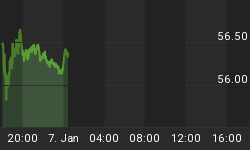Technical observations of RossClark@shaw.ca
"The fiscal history of Latin America ... is replete with instances of governmental default. Borrowing and default follow each other with almost perfect regularity. When payment is resumed, the past is easily forgotten and a new borrowing orgy ensues. This process started at the beginning of this past century and has continued down to this present day. It has taught nothing." -- Max Winkler, Foreign Bonds: An Autopsy, Rowland Swain Co., Philadelphia 1933
• We have been looking for an important reversal in credit spreads.
• Levente and Ross have put together some charts that suggest that this is about to happen.
• This could overwhelm the Fed's untiring dedication to reckless credit policies.
• This week Mr. Greenspan noted that long rates declining as short rates increased was "utterly unprecedented". A few weeks ago, he used the term "conundrum".
• This was just as the bold rally was about to correct and the establishment's bear raid finally took effect.
• Our research now suggests that the long treasury could resume the rally and if short rates don't decline this would extend the "conundrum" found in central banking circles.
Emerging Market Debt
The above price chart is also a proxy for most spreads - following a reasonably high ADX, this week's lower low and lower high constitutes a "sell". From 10.10 now, the target is 8.60. Albeit with different numbers, this is similar to the call on Apple a few weeks ago.
As we have been noting, emerging spreads have been narrowing (the MSD is a price chart) while the high-yield, over treasuries, has been working on a reversal. This spread narrowed from 923 bps in the October, 2002 panic to 183 bps at the end of the year. It then widened to 251 bps on February 9 and narrowed to 212 on March 9.
It has since widened to 227 bps yesterday. Going through this would take out nearby resistance and through 251 bps would set the uptrend.
In the meantime, the MSD has given a convincing "sell", which is independent of the analysis on the high-yield.
Earlier in the year, we advised getting out of lower grade corporates and, using the MSD, we would now reduce, if not avoid, emerging debt.
LONG DATED TREASURIES
20+ YEAR TREASURY BOND FUND (TLT)
The TLT chart (previous page) shows the long uptrend in price that the establishment missed due to extreme bearishness as well as to a touch of "conundrum".
The bond price is down to support and running out of downside momentum and is a buy. While there is usually some seasonal weakness from around now into mid-April, it could have been offset by the preemptive bear raid. It may just make the action a bit choppy before the launch.
The following chart reviews the COT (Commitment of Traders) and those who usually get it right are very long the ten-year. The key is the inset note that points out that the RSI has given a "sell" (yields down) and that over the survey this has been reliable.
This 10-year analysis applies to the long bond as well.
TNX 10-YR. YIELD
The following chart provides an analysis independent of the above that concludes that the long bond could rally well into April.
THE LONG BOND - BIG PICTURE
Wrap: The establishment is aggressive long lower grade bonds and unusually short of duration in treasuries. This shows up in various sentiment measures as well as the exceptionally narrow spreads. The ChartWorks analysis suggests that a significant reversal in emerging spreads is starting.
Previous selloffs in the MSD have been associated with slumps in crude oil prices or, more generally, in commodities, which seem to be blowing out.
This goes along with the adage that "prosperity is associated with rising prices and hard times with falling prices". As pricing power diminishes, so does earnings and, with that, the ability to service debt. If it runs long enough, rating agencies follow with downratings, etc.















